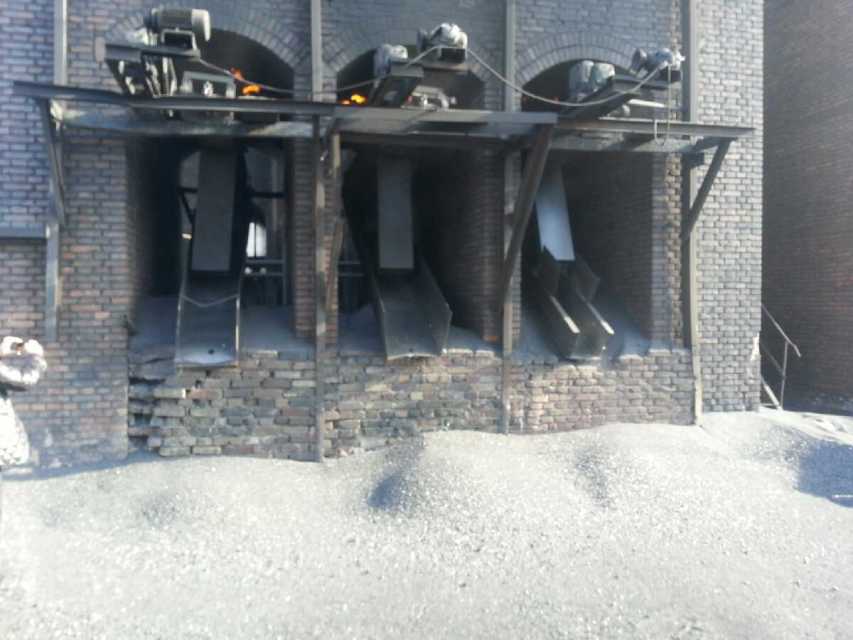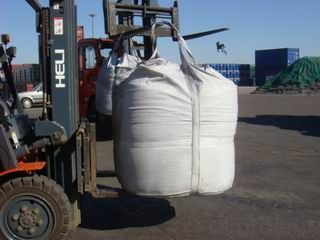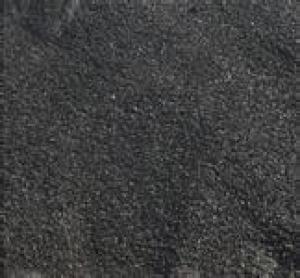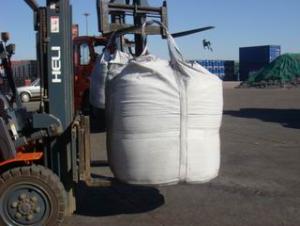Carbon Additive FC93/High F.C. CNBM Carbon Additive
- Loading Port:
- China main port
- Payment Terms:
- TT OR LC
- Min Order Qty:
- 0 m.t.
- Supply Capability:
- 100000 m.t./month
OKorder Service Pledge
OKorder Financial Service
You Might Also Like
Packaging & Delivery
| Packaging Details: | 1. carbon additive in 1 MT jumbo bag 2. carbon additive in 25kg PP bag 3. carbon additive in 50 kg woven bag 4. carbon additive in bags then put them on pallet 5.bulk in container 6.as your requirements |
| Delivery Detail: | within 10 days after receiving 30% deposit or LC |
Product Description
Carbon additive (carbon raiser) with characteristic of low ash and low sulfur is made from calcined petroleum coke, graphite petroleum coke or high quality anthracite coal . As an ideal recarburizer and intermediate reactor, it has been widely used in different industries like metallurgy, chemistry, machinery, electricity, etc.
The selection of a charging carbon is determined by the quality requirements of the steel or ferroalloy production as well as the cost and availability of carbon products. So the recarburizer is mainly used in the metallurgy to increase the content of carbon.
Specification
Carbon | Min98% |
Ash | Max0.5% |
Sulphur | Max0.05% |
V.M | Max0.5% |
Moisture | Max0.5% |
N | Max0.03% |
H | Max0.01% |
Sizes(mm) | 1-5 1-3 3-10 1-10 |
Calcined petroleum coke as carbon additive
Carbon | Min89% |
Ash | Max0.3% |
Sulphur | Max6% |
V.M | Max10% |
Moisture | Max8% |
N | Max0.03% |
H | Max0.01% |
Sizes(mm) | 1-5 3-8 5-15 10-20 |
| |
Calcined anthracite coal as carbon additive
Carbon | Min90-95% |
Ash | Max5% |
Sulphur | Max0.5% |
V.M | Max1.5% |
Moisture | Max0.5% |
N | Max0.03% |
H | Max0.01% |
Sizes(mm) | 1-5 3-8 1-3 |
Pictures of Calcined AnthraciteCoal:




- Q:What is the atomic weight of carbon?
- The atomic weight of carbon is approximately 12 atomic mass units.
- Q:What are the impacts of carbon emissions on the stability of kelp forests?
- Kelp forests are significantly affected by carbon emissions, which have a major impact on their stability. The increased levels of carbon dioxide in the atmosphere lead to ocean acidification, causing harmful effects on kelp. When carbon dioxide dissolves in seawater, it creates carbonic acid, which lowers the ocean's pH. This acidification prevents kelp from growing and developing properly, making them more vulnerable to stressors and reducing their overall stability. Ocean acidification affects kelp physiology in various ways. It impairs their ability to absorb essential nutrients like nitrogen and phosphorus, which are crucial for their growth. This nutrient deficiency weakens the kelp, making them more susceptible to diseases, predation, and damage from storms. Moreover, acidified seawater hinders the development of kelp spores, which impairs their ability to reproduce and regenerate kelp forests. Furthermore, carbon emissions contribute to the increase in sea temperatures, which also harm kelp forests. As the climate warms, kelp may face thermal stress, resulting in slower growth rates and higher mortality rates. Warmer waters also create favorable conditions for harmful algae species, which can outcompete kelp for space and resources, further destabilizing kelp forests. The stability of kelp forests is crucial because they provide numerous ecosystem services. They act as important carbon sinks, absorbing and storing large amounts of carbon dioxide from the atmosphere. Kelp forests also serve as habitats and nursery grounds for a wide range of marine species, including commercially important fish and invertebrates. They play a vital role in maintaining the health and productivity of coastal ecosystems by reducing coastal erosion, improving water quality, and supporting biodiversity. To mitigate the impacts of carbon emissions on kelp forests, it is crucial to reduce our carbon footprint by transitioning to cleaner and more sustainable energy sources. Additionally, protecting and restoring coastal habitats, including kelp forests, can enhance their resilience to climate change and other stressors. Implementing sustainable fishing practices and establishing marine protected areas can also help preserve and maintain the stability of kelp forests and the valuable ecosystem services they provide.
- Q:How is carbon used in the production of solar cells?
- Carbon is not directly used in the production of solar cells. Solar cells are typically made of semiconductor materials like silicon or cadmium telluride. However, carbon-based materials can play a crucial role in enhancing the performance and efficiency of solar cells. One way carbon is used is in the form of carbon nanotubes, which can be used as a transparent electrode in solar cells. Carbon nanotubes have excellent electrical conductivity and optical transparency, making them an ideal candidate for replacing traditional transparent conductive materials like indium tin oxide. Additionally, carbon-based materials can be used as a coating or encapsulation layer, providing protection to the solar cells from moisture, corrosion, and mechanical stress. Carbon-based materials also have the potential to be used in the development of next-generation solar cell technologies, such as organic solar cells or perovskite solar cells, which utilize carbon-based compounds in their active layers. Overall, while carbon may not be directly used in the production of solar cells, it plays a crucial role in improving their performance and enabling the development of more advanced solar cell technologies.
- Q:What is carbon Yi virus?
- Not viruses, anthrax bacillus, anthraci (Bacillus) belongs to aerobic bacillus, can cause sheep, cattle, horses and other animals and human anthrax. Anthrax was as lethal agents of imperialism. Herdsmen, farmers, furs and butchers are susceptible to infection at ordinary times. Skin anthrax is sporadic in our country, so we should not relax our vigilance. Biological characters (1) morphological staining: Bacillus anthracis is thick and ends are flat or sunken. Are like bamboo like, no power, no flagella, gram positive bacteria, the in sufficient oxygen, suitable temperature (25 to 30 DEG C) condition to form spores. No spores can be formed in living or dissected bodies. Spore oval, located in the middle of the bacteria, its width is less than the width of bacteria. Capsules can be formed in humans and animals, and in capsules incubated with CO2 and serum, they can also form capsules. The formation of capsules is a toxic feature. Bacillus anthracis is affected by a low concentration of penicillin, and bacteria can be enlarged to form a bead, called "beaded reaction"". This is also a unique reaction of Bacillus anthracis. (two) the culture characteristic of this bacterium is obligate aerobic, and it is easy to breed in common medium. The optimum temperature was 37 DEG C, and the optimum pH was 7.2 ~ 7.4. After 24 hours on agar plate, the rough colony of 2 ~ 4mm Diameter was developed. The colonies were ground glass like, irregular edge, like curly hair, there are one or several small tail processes, this is the expansion of reproduction in 5 caused by bacteria to 10% sheep blood agar plate, no obvious hemolysis ring around the colony, but a long culture can have mild hemolysis.
- Q:How does carbon impact the availability of clean air?
- Carbon impacts the availability of clean air by contributing to the formation of air pollutants such as carbon dioxide (CO2) and carbon monoxide (CO). These greenhouse gases trap heat in the atmosphere, leading to global warming and climate change. Additionally, carbon emissions from burning fossil fuels and other human activities can react with sunlight and other pollutants, forming ground-level ozone and particulate matter, which can negatively affect air quality and human health. Therefore, reducing carbon emissions is crucial to maintaining clean air and mitigating the adverse impacts of pollution.
- Q:What are the impacts of carbon emissions on the stability of deserts?
- Carbon emissions have a significant impact on the stability of deserts. Increased levels of carbon dioxide in the atmosphere contribute to global warming, leading to higher temperatures and altered precipitation patterns. These changes can intensify desertification processes, such as soil erosion and water scarcity, further destabilizing desert ecosystems. Additionally, carbon emissions from human activities, such as fossil fuel combustion, contribute to air pollution, which can harm desert flora and fauna, disrupting their ecological balance and overall stability.
- Q:What are the consequences of increased carbon emissions on public health systems?
- Increased carbon emissions have significant consequences on public health systems. One of the most prominent effects is the exacerbation of respiratory diseases such as asthma, chronic obstructive pulmonary disease (COPD), and bronchitis. Carbon emissions contribute to the production of fine particulate matter (PM2.5) and ground-level ozone, both of which can penetrate deep into the respiratory system and cause or worsen these conditions. Moreover, higher levels of carbon emissions are correlated with an increased prevalence of cardiovascular diseases. Fine particulate matter and other pollutants released from carbon-emitting sources can enter the bloodstream, leading to inflammation, oxidative stress, and the development of atherosclerosis. Over time, this can result in heart attacks, strokes, and other cardiovascular complications. Climate change, driven by carbon emissions, also impacts the spread of infectious diseases. Rising temperatures and altered precipitation patterns create favorable conditions for the expansion of disease vectors like mosquitoes and ticks, leading to the transmission of diseases such as malaria, dengue fever, Lyme disease, and Zika virus. Additionally, extreme weather events and natural disasters associated with climate change can disrupt healthcare infrastructure and compromise access to essential services, further impacting public health systems. Furthermore, mental health is also affected by increased carbon emissions. The environmental degradation caused by carbon emissions contributes to feelings of anxiety, stress, and depression, often referred to as eco-anxiety or climate grief. The loss of biodiversity, destruction of natural habitats, and the overall uncertainty surrounding the future can have detrimental effects on individuals and communities, requiring additional resources and support from public health systems. In summary, increased carbon emissions have far-reaching consequences on public health systems. They contribute to the prevalence of respiratory and cardiovascular diseases, facilitate the spread of infectious diseases, and impact mental health. Addressing carbon emissions and implementing sustainable practices are essential to mitigating these consequences and safeguarding the well-being of individuals and communities.
- Q:What is carbon fiber reinforced polymer?
- Carbon fiber reinforced polymer (CFRP) is a composite material made up of carbon fibers embedded in a polymer matrix. It combines the high strength and stiffness of carbon fibers with the lightweight and corrosion-resistant properties of the polymer matrix. CFRP is widely used in various industries, including aerospace, automotive, and sporting goods, due to its exceptional strength-to-weight ratio and superior mechanical properties.
- Q:What is carbon dioxide?
- Carbon dioxide (CO2) is a colorless and odorless gas composed of one carbon atom bonded to two oxygen atoms. It is naturally present in the Earth's atmosphere and is also produced by human activities such as burning fossil fuels and deforestation. Carbon dioxide plays a crucial role in the Earth's carbon cycle and is a greenhouse gas, contributing to global warming and climate change.
- Q:The victory of the lightning 3361 material is full of carbon fiber, and the 3363 is made of carbon fiber and resin, which is better??
- All carbon fiber is good. The resin is only used for the badminton line, not for the racket.All carbon fiber material, is the most important material for badminton racket, all carbon fiber, good toughness, but also take into account the light performance.Carbon composite fiber, that is, in the carbon fiber added ordinary metal elements, such as aluminum, this material is relatively heavy, and toughness is not all carbon material.The best one is the carbon fiber material of racket frame which added to the rare metal, adding rare metal frame strong resilience, stability is better, and more suitable for double play.
1. Manufacturer Overview |
|
|---|---|
| Location | |
| Year Established | |
| Annual Output Value | |
| Main Markets | |
| Company Certifications | |
2. Manufacturer Certificates |
|
|---|---|
| a) Certification Name | |
| Range | |
| Reference | |
| Validity Period | |
3. Manufacturer Capability |
|
|---|---|
| a)Trade Capacity | |
| Nearest Port | |
| Export Percentage | |
| No.of Employees in Trade Department | |
| Language Spoken: | |
| b)Factory Information | |
| Factory Size: | |
| No. of Production Lines | |
| Contract Manufacturing | |
| Product Price Range | |
Send your message to us
Carbon Additive FC93/High F.C. CNBM Carbon Additive
- Loading Port:
- China main port
- Payment Terms:
- TT OR LC
- Min Order Qty:
- 0 m.t.
- Supply Capability:
- 100000 m.t./month
OKorder Service Pledge
OKorder Financial Service
Similar products
New products
Hot products






























